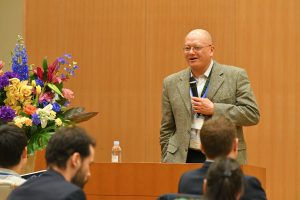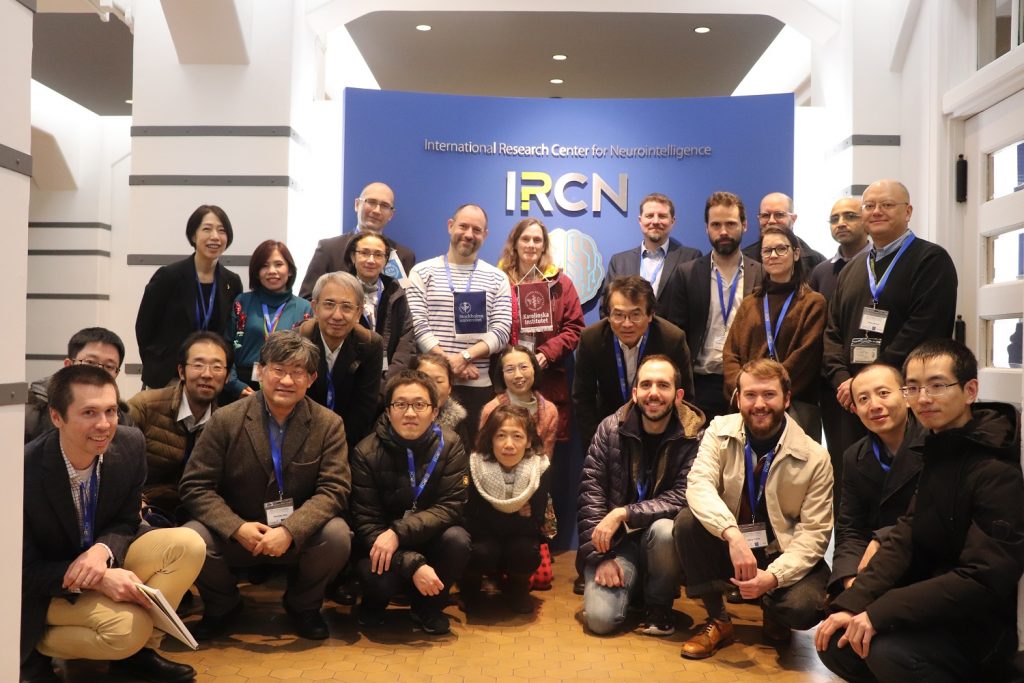
IRCN welcomed a scientific delegation from three prestigious research organizations based in Stockholm, Sweden: the Karolinska Institute (KI), Stockholm University (SU), and the KTH Royal Institute of Technology. The January 27-28, 2020 workshop was supported by The University of Tokyo Strategic Partnerships Program whose goal is to promote international research collaboration and borderless exchanges of ideas and scholars for global progress.
The workshop was over a year in the planning, culminating diplomatic overtures from the President and Dean of Research from KI to UTokyo, and the planning of a scientific agenda that included current trends in neural circuit research with an emphasis on how cutting edge neuroscience technologies are being used to dissect mechanisms of neural circuit development, computation, and clinical areas to finally understand human intelligence.
The six-fold axis of workshop themes included attention and social communication, olfaction and parental behavior, excitatory-inhibitory balance, network dynamics, basal ganglia and learning, and synaptic plasticity. A core goal was how to conduct research via interdisciplinary collaboration and exchange. To enable interactions between researchers on all sides, thematic breakout discussion sessions complemented the lecture sessions.
In the morning session, Yukie Nagai (IRCN) described studies exploring the hypothesis that prediction errors that normally encode priors for internal guided behavior may be aberrant in autism spectrum disorder, using neural network modeling and a drawing task. In parental intelligence studies, Christian Broberger (SU) showed that remarkable species differences could be exploited and manipulated to understand the circuit mechanisms of paternal care.



In the afternoon, Takao Hensch reviewed the body of work from his group indicating that gamma oscillations produced in part by cortical PV interneurons could alter the local circuit extracellular perineuronal network to control critical period plasticity. Konstantinos Meletis shared remarkable progress in brain atlasing and mapping enabling a functional map of reward in striatum based behavior using sophisticated GRIN lenses and calcium indicators.
Brain gamma oscillations were a continuing theme in the workshop, and computational scientist Pawel Herman (KTH) revealed interesting insights on prefrontal gamma that questioned whether persistent activity occurs or is an average of shorter local bursts. Mia Lindskog (KI) showed that in an animal model of depression impaired glutamate uptake could trigger changes in plasticity and adaptation in neural activity to reconfigure circuits.
The workshop organizers Takao Hensch, Mia Lindskog, and Mayumi Kimura agreed that participants could begin proposing collaborations on specific research topics and seek funding to further bridge the institutes. The next joint meeting is planned for fall 2020.

*For more information, please refer to the event page.
Correspondent: Charles Yokoyama, Ph.D., IRCN Science Writing Core


